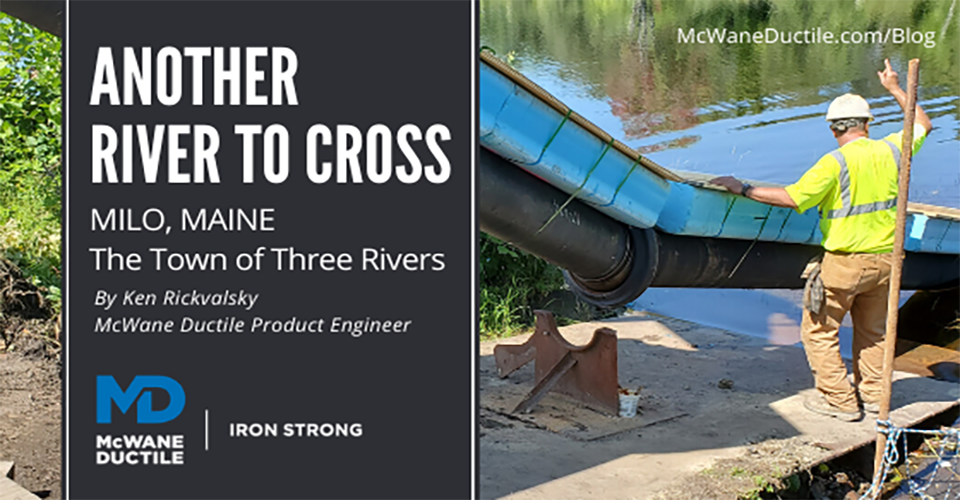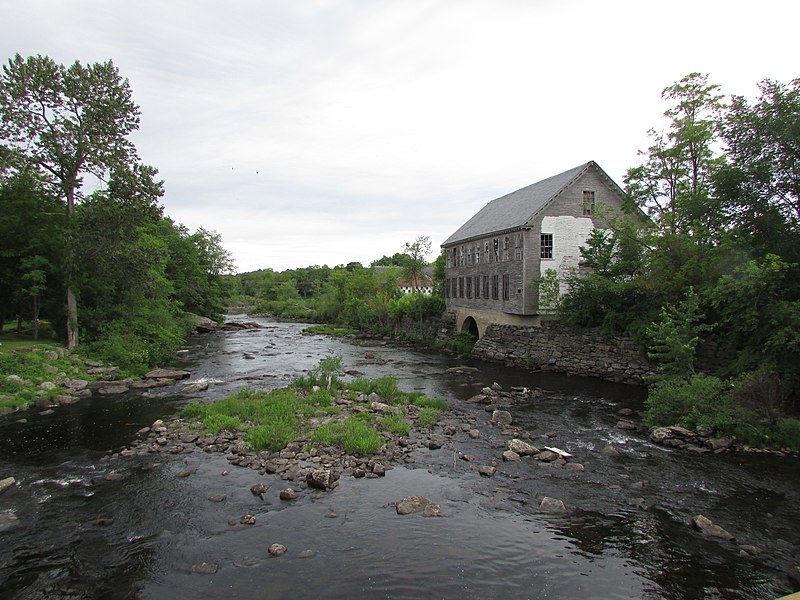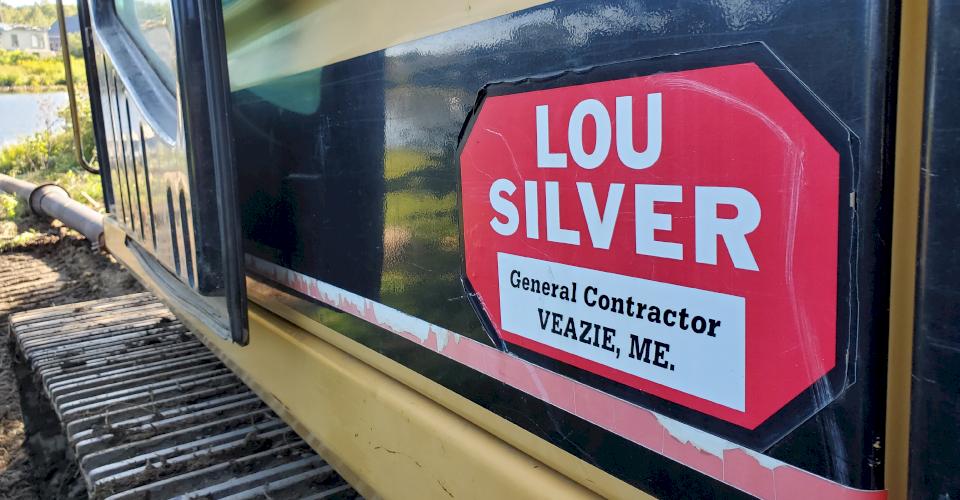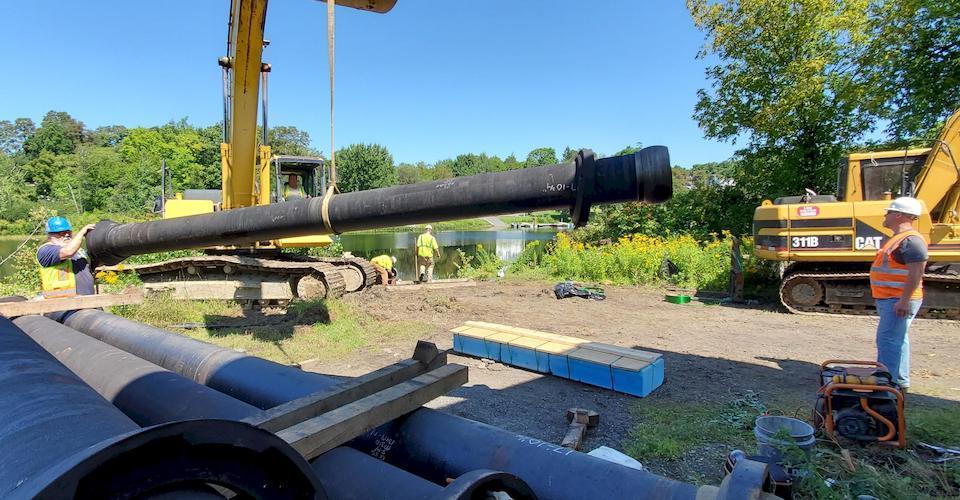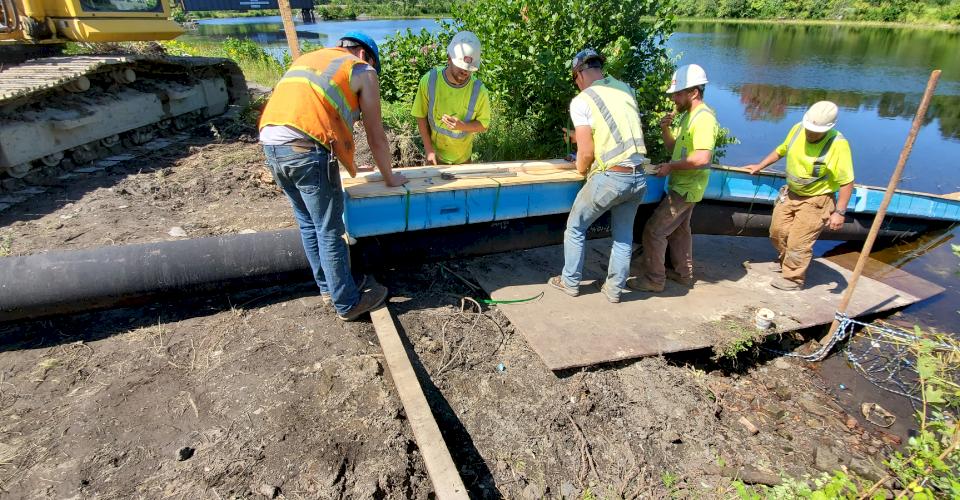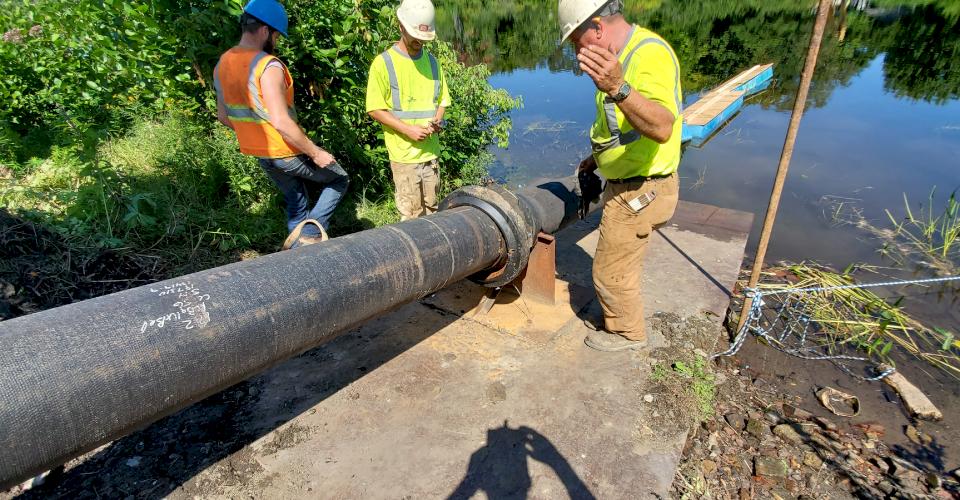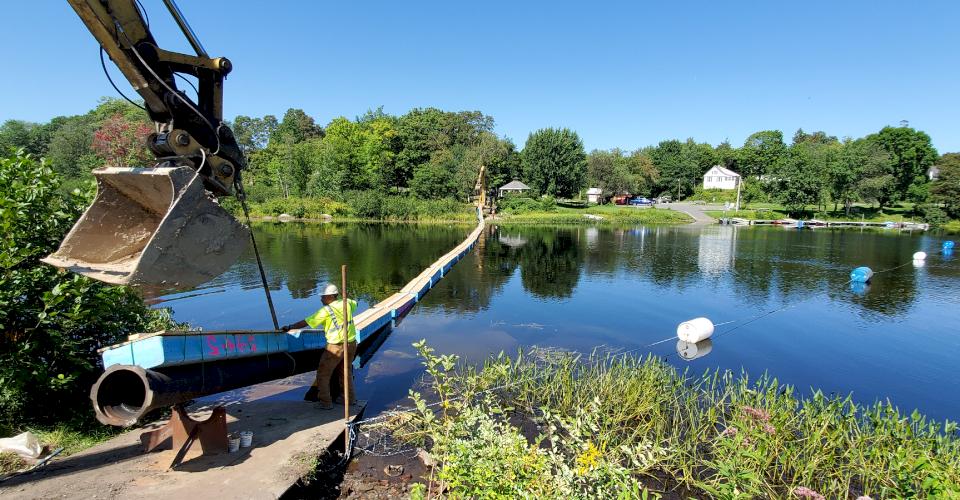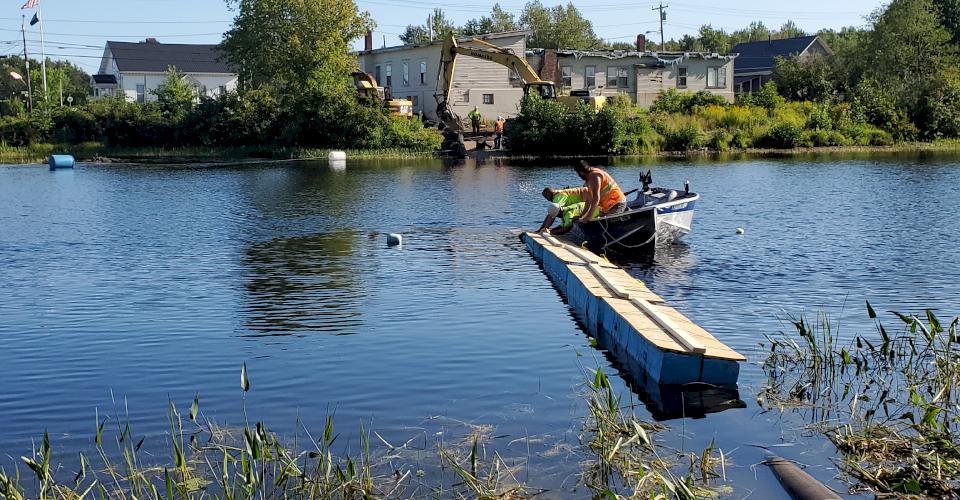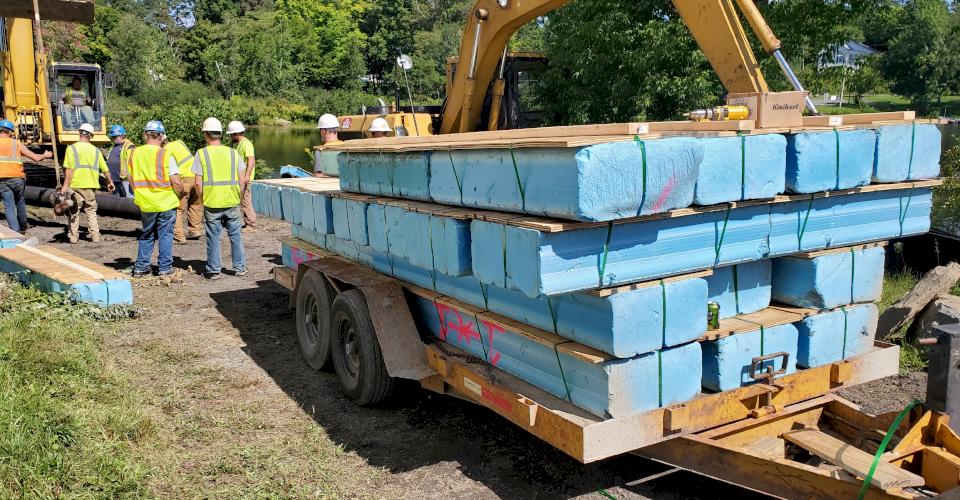HISTORY
Forty miles north of Bangor, Maine, at the confluence of the Piscataquis, Pleasant and Sebec Rivers, is the town of Milo, Maine, a charming enclave founded in 1802. The early history of Milo was dominated by iron works and railroads where it soon became home to the second largest railroad car and repair facility in the New England territory at that time.
SYSTEMS
Milo’s primary treatment facility draws water from the Sebec River, subsequently supplying 160,000 gallons per day (GPD) on average to 700 of the current 2,200 residents who are connected to the 8 miles of cast and Ductile iron pipes (DI pipes) comprising the Milo Water District system. Comparatively, Manhattan, New York, at 23 square miles is 33 percent smaller than Milo in land area, yet has 7,000 miles of pipe beneath its streets to provide nearly 200 million gallons of water per day (MGD) to 1.7 million people.
Despite the immense structural differences of the systems, Chris Knowles, Superintendent of the Milo Water District, was clear in stating, “We take great pride in providing clean and healthy water to every person we serve. Size doesn’t make a system great; consistent attention to detail does.”
NEEDS
A 10-inch cast iron pipeline on supports across the Sebec River adjacent to the Main Street bridge has been the largest water supply line in town since it was installed more than 100 years ago. The remainder of the system is constructed of cast and DI pipes ranging in size from 2-inch to 8-inch diameters.
With replacement of this 1920’s era bridge looming, it was decided by the Milo Water District to continue their ongoing system upgrades with the installation of a 12-inch DI pipe section across the Sebec River. This would improve flow efficiency overall, provide a second loop within their system and ensure adequate fire-fighting capacity at each of the 94 hydrants in town.
PLANNING & PERSERVERACE
Dirigo Engineering, based in Fairfield, Maine, was tasked with designing the system improvements by introducing 12-inch Ductile iron pipe into Milo’s water system. Just over 2,100 feet of DI pipe, including 300 feet of 12-inch ball and socket river crossing pipe would be the backbone of these upgrades.
According to Jim Lord, PE, a Project Manager at Dirigo Engineering, “The reliability of DI pipe overall, plus the strength and versatility of ball and socket pipe in uncertain marine environments made it the perfect choice for this project.”
Several locations for the Sebec River crossing were scouted, with the final location decided by several key factors, including but not limited to the river profile at each considered location. Consistent with the iron works and railroad history of Milo, and Dirigio Engineering’s strong belief in the American Iron & Steel Act, the State Revolving Funds involved in financing this project invoked the Buy American Clause toward the manufacture and supply of items used to construct it.
This created a unique opportunity for a local waterworks distributor. Andy Dube, an Account Manager with the F.W. Webb Company had been pursuing a chance to work with Lou Silver Inc., a general contractor from Veazie, Maine. While F.W. Webb has been a domestic wholesale commercial supplier since 1866, they had not previously established a strong physical footprint in the north-central Maine area, making the contractor hesitant to use them.
Determined to use this project as “an opportunity to demonstrate F.W. Webb’s mission to be a mainstay in this market,” Dube had convinced Lou Silver, Inc., owned and operated by Barney Silver, to “test” Dube and F.W. Webb with two very small unrelated projects. Success on those, and the emergent inability of the original pipe provider to fully meet the American Iron & Steel Act requirements, Dube received a lastminute call of challenge from Mr. Silver in late March, asking, “Hey Andy, you got a miracle in your pocket?”
By mid-April, Dube and F.W. Webb had secured the purchase order, and with cooperation from McWane Ductile, all the pipe and fittings needed, including the specialty-fabricated ball and socket river crossing pipe, were on site in Maine in June, 2019.
CONSTRUCTION & CONCERNS
Lou Silver began Lou Silver, Inc. in the late 1940s. Lou’s son, Barney Silver, took over in the early 1970s and has served as the Owner and President of Operations to this date. His son, Jake, is currently a Superintendent with the company, and the next generation of the company.
Most 16-inch wall classes of Ductile iron pipe, and all Ductile iron pipe diameters smaller than 16-inches, will sink when placed into a waterway. 20-inch and larger Ductile iron pipes, by their own mass to empty volume ratio, are buoyant. Given this project involved 12-inch Ductile iron pipe, flotation and control of the pipeline during construction would be crucial to avoid undesired conflicts or additional drag forces created through “pulling a sunken pipeline.” According to Barney Silver, “proper planning of constructing this project and having the right people in place” were the most important factors in its success.
Citing lessons learned on previous river crossing installations led to improvements in their flotation, guidance and final placement of the river crossing segment of this project. During a 16-inch river crossing installation across the Stillwater River in Old Town, Maine, the styrofoam and plywood flotation planks they originally designed were damaged when the pipeline was “released” from it.
This led them to develop a sturdier version using 2x4s as longitudinal bracing on each flotation plank. Subsequently, they installed 900 feet of 12-inch river-crossing pipe in the Penobscot River without damaging a single plank, thereby allowing them to easily recycle all the planks for this 300-foot Sebec River project.
From a riverside trailer they easily fed and attached these improved flotation planks with nylon strapping onto the river crossing pipe as it was assembled piece by piece off one shore of the river. A support and guidance structure made of steel allowed full control and easy assembly of each push-on ball and socket joint. An excavator on the opposite bank of the river, via a guide-wire attached to the leading end of the river crossing pipeline being constructed, escorted it across the river as it grew in assembled length.
Once fully assembled, the river-current-induced curvature of the pipeline was easily removed with minor tension applied from each side of the river, securing the pipeline into its straightened and preferred alignment. Cutting the flotation planks away in an organized manner ensured the pipeline came to rest exactly as designed. The flotation planks were then loaded back onto the same trailer on the completion side of the river.
A diver confirmed the location of, and contact with, the existing river bottom as the pipeline relaxed into place. Given the extensive pre-construction planning, this entire 300-foot crossing was completed in less than five hours.
ONE LAST THING
After allowing the pipeline to settle in place overnight, the contractor returned the next morning and dutifully excavated under and alongside portions of the pipeline at each river bank to achieve more than 3 feet of cover on the pipeline through each river bank so that ice or flows of ice would never contact the pipeline.
The open-cut trench installations through the rest of Milo were installed with 6 to 8 feet of cover to avoid frost loads in the winters. The use of strong and flexible Ductile iron pipe on this project has prepared Milo for, as Chris Knowles of the Milo Water District put, “the return of railroad work has Milo on the rise, and a greater water supply is now in place to serve its needs.”
ARE YOU PLANNING A RIVER CROSSING PROJECT?
Be sure to contact your local McWane Ductile representative to request a Lunch & Learn or on-site training before installing your next Ductile iron pipeline. From design to installation, we take great pride in providing education and assistance to water professionals throughout the water and waste water industry.
Check out all our digital offerings:

